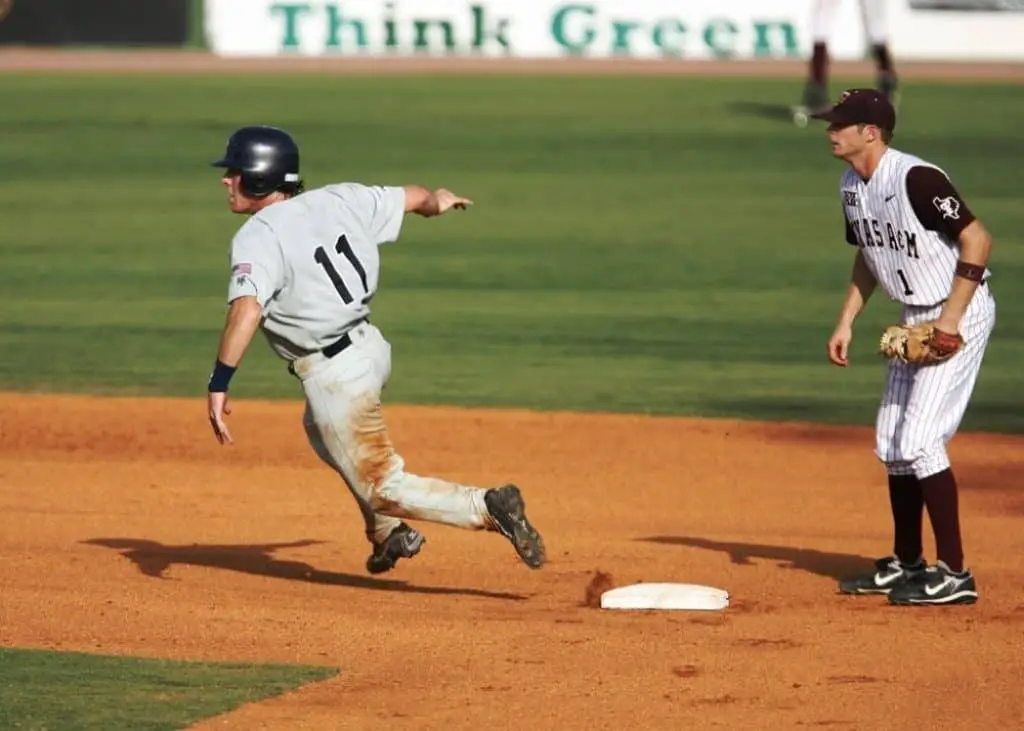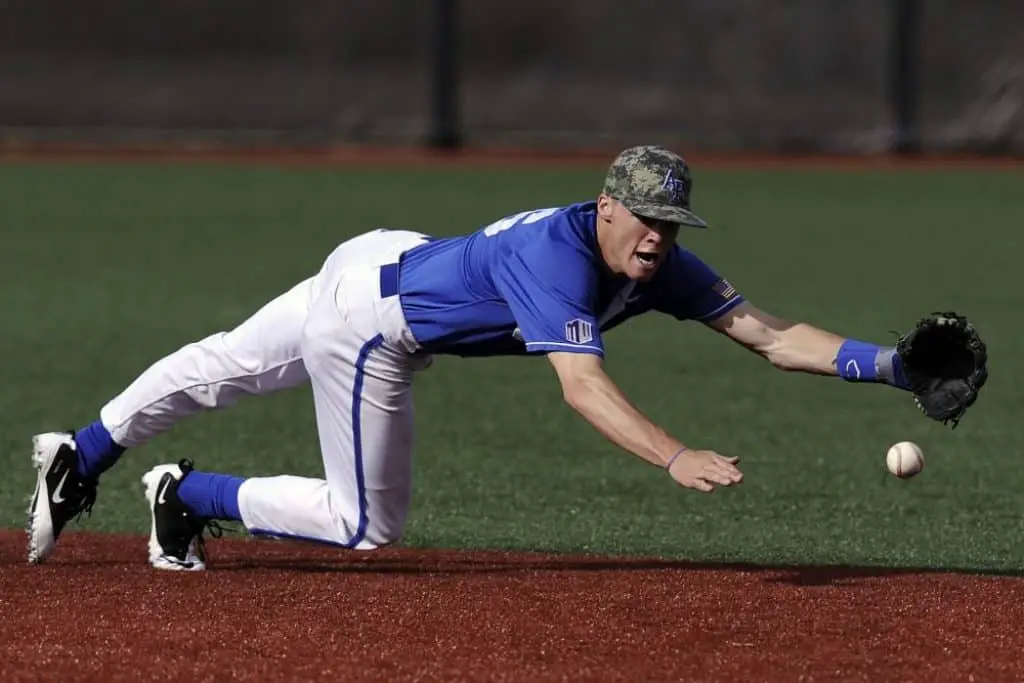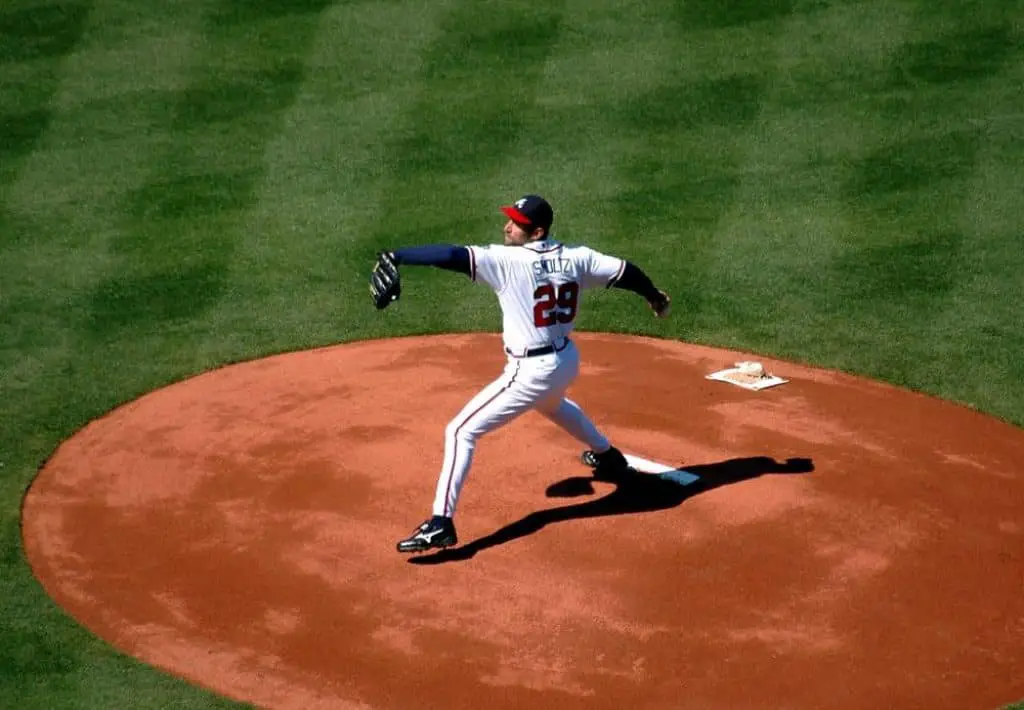The 4 Fundamentals Of Baseball Explained
Anyone who enjoys baseball marvels at the amazing skills of pro players we get to watch almost every day as they take to the field.
Watching them make winning plays, the game seems more than easy.
Of course, these plays only look simple and effortless because those players can make those moves in their sleep.
The reason that they can do so is that they, in most cases, have completely mastered baseball fundamentals.
No advanced skill can be learned without previously gaining a full grasp of the fundamentals of baseball.
Only when the player has the baseball basics in their hands, they can work on further improving their abilities.
Therefore, it’s extremely important to pay particular attention to this part of training, especially at a young age.
Investing time and effort into learning fundamentals is the key to becoming a successful ball player and potentially having a career in the game.
Table of Contents
Fundamentals Of Baseball
The question of what are exactly the key fundamentals of baseball is a subject of many debates among both experts and fans.
Still, most of them can agree on certain skills that are essential parts of every player’s arsenal, such as hitting, fielding, throwing, or running.
Each of these basic skill categories features several fundamentals that are essential to the game.
Still, it’s hard to expect a player to master all fundamentals of the game, but they should be competent in each of them.
Total incompetence in any of the basic baseball skills can seriously diminish the value of a player, as it can often cost a whole team a game.
Rare players who, from a young age show full control of each fundamental are commonly considered to have star potential.
Below is a list of the skills that are typically considered fundamental in baseball.
Hitting

Hitting is probably the part of baseball that draws most young kids to the game.
Every kid who’s ever held a baseball bat in his hands dreams about hitting a home run that will deliver their team the World Series trophy.
However, hitting a ball that comes flying your way from the pitching mound is anything but easy.
Especially since you have only a split second to react. Good hitters need great timing, plenty of confidence, and supreme hand-eye coordination.
Of course, to be able to use these talents, a hitter first has to master hitting fundamentals and the best time to do this is at a young age.
Hitting Fundamentals
The first and the most basic thing to learn is how to hold a bat. This means that the players should have a firm grip on the bat and hold it only with their fingers, not their palm.
A proper stance is also important.
The batter should have the opposite of the pitcher’s throwing hand facing the pitcher, while the bat is held over the opposite shoulder, with knees slightly bent and the weight on the back leg.
As the pitcher pitches, the batter should initiate a swinging motion and start a moderate stride with the front toe closed and the weight still at the back.
At this point, the hitter should initiate a strong and level rotation of the hips and shift the weight to the front side.
This will allow the momentum to move forward and add power to the swing, adding a follow-through after the contact.
Baserunning

Aggressive baserunning is the best way to put some pressure on the opposing defense. Therefore, good baserunners are always appreciated and bring a lot of value to their teams.
Still, as speed is of the utmost importance here, some players due to their limited athletic abilities can hardly ever become high-quality baserunners.
However, understanding how to run the bases and the ability to read the situation on the field can help them become competent in running the bases.
Additionally, any player can become a better baserunner by learning the strength and weaknesses of the batters on his team and opposing fielders.
A solid control of baserunning fundamentals and basic techniques will certainly also help a lot.
Baserunning Fundamentals
The fundamental skills of baserunning should be learned while the player is young.
While at the T-ball and the younger Little League age groups, kids can get by with only baserunning home to 1st through the bag, as they get older they will need to master skills such as tagging up from 1st, 2nd, and 3rd, sliding feet first, straight and delayed steals, and rundowns.
It all starts with the stance for the lead-off which implies slightly bent knees, feet at shoulder width, arms flexing in front of the body, and the whole body bent forward at a 45-degree angle.
As the running starts, it’s important to stay low as you accelerate. Arms and hands should be relaxed and in a parallel position relative to the running line.
Fielding

As it stops the opponents from scoring runs, good fielding is one of the major factors in winning games.
While fielding mostly implies catching and throwing the ball, it also involves anything else a player does on the field while waiting for the ball, catching it, or passing it forward.
Learning how to properly field the ball that may be coming along the ground or flying through the air takes a lot of practice.
A good fielder also needs solid athleticism, near-perfect coordination, timing, and a high baseball IQ, necessary for understanding the game and reading the situation on the field.
The path of the ball is rather unpredictable, and getting to the right spot and fielding the ball is fairly difficult.
Fielders must be alert at all times and always ready to hustle to get to the ball on time.
Fielding Fundamentals
The fundamentals of fielding differ a bit, depending on whether the player plays in the infield or the outfield, but the basics are pretty much the same.
The key is to get your body in the proper position to be able to field the ball. This means getting the body squarely in front of the ball and approaching it slightly as it comes in.
In case the ball is hit along the ground, or anywhere below the waist level, the glove fingers need to be close to the ground so you can easily scoop it up.
When the ball flies higher, the fingers should point upwards in the anticipation of the ball. Once the ball is caught, the fielder must learn how to secure it.
The throwing hand goes immediately above the glove and both hands should be brought to the body.
The ball then should be firmly gripped and thrown using throwing fundamentals.
Throwing

While throwing may seem like the easiest part of the game, it’s far from that.
The basic skills for throwing take a lot of effort to learn and, even then, only constant practice can ensure that the throws are strong and precise.
Throwing the ball involves the whole body so good coordination is a must.
Additionally, to be able to throw the ball well, the fielder must be able to fully command his balance, possess a solid throwing arm, and have an immaculate sense of timing.
Arm strength is particularly important as it adds distance to the throw but also helps players avoid injuries, especially to the shoulder which is under the most strain during the throwing motion.
For all these, reasons, even the pro players have to practice fundamental skills of throwing on a regular basis.
Throwing Fundamentals
The proper throwing of the ball revolves around three fundamental skills. These include grip on the baseball, proper throwing stance, and the throw itself.
The ball should be gripped with light pressure, but firmly, with two fingers on top and the thumb edge on the bottom of the ball, the so-called four-seams grip.
Once the player has the ball secured and in his throwing hand, he should assume the proper throwing stance.
The leg opposite the fielder’s throwing hand should be in front and directed towards the target of the throw.
The other hand should be pointed towards the target with the weight on the back leg.
The throwing should start with the strong rotation of the hips and elbow and the shoulder aligned at the release point.
Then, the throwing arm should move forward releasing the ball and finishing with as much time and distance as possible.
Conclusion
Baseball fundamentals should be viewed as the building block of the game, a necessary foundation upon which all advanced abilities should be built on.
Skipping the fundamentals will make developing other, more particular, baseball skills practically impossible.
Even a solid grasp of the fundamentals only will make a player a valuable asset to the team and allow them to influence the outcome of the game.
Players who command all the fundamentals are usually more valued than those who excel only in certain skills.
While they’re mostly learned at a young age, fundamentals still require regular practice.
The good thing is that, while practicing baseball fundamentals, you’ll probably be developing other skills without even noticing it.




